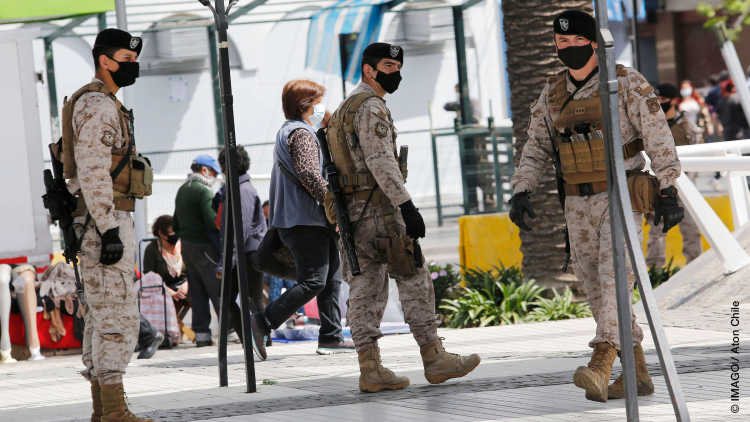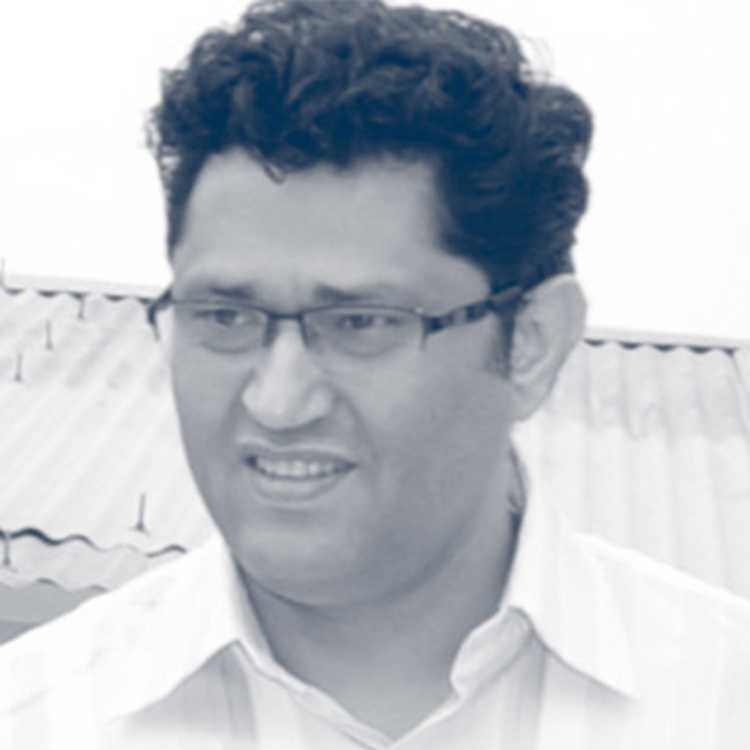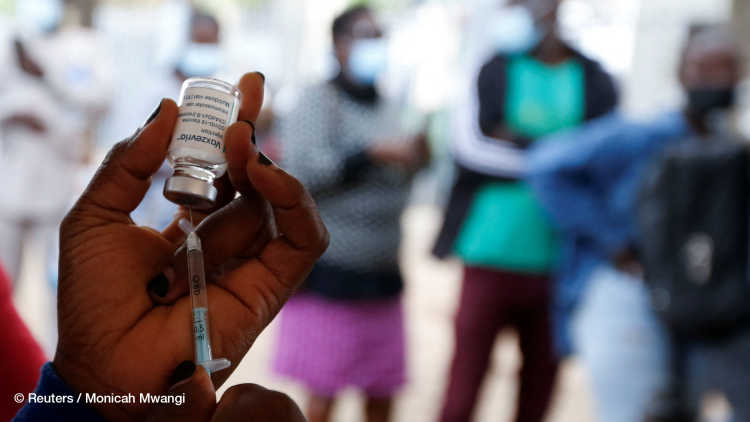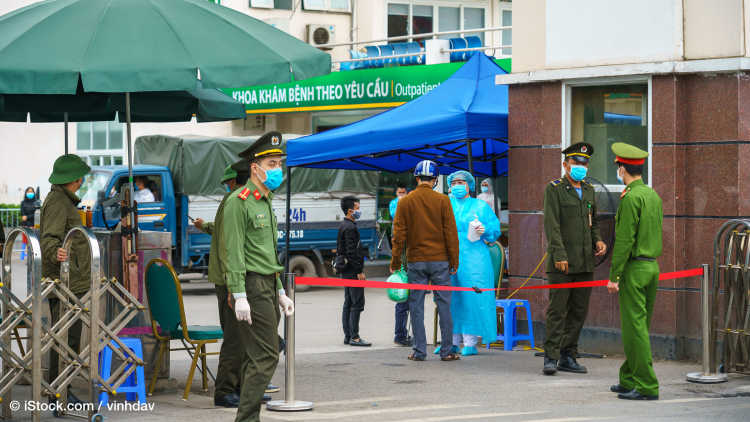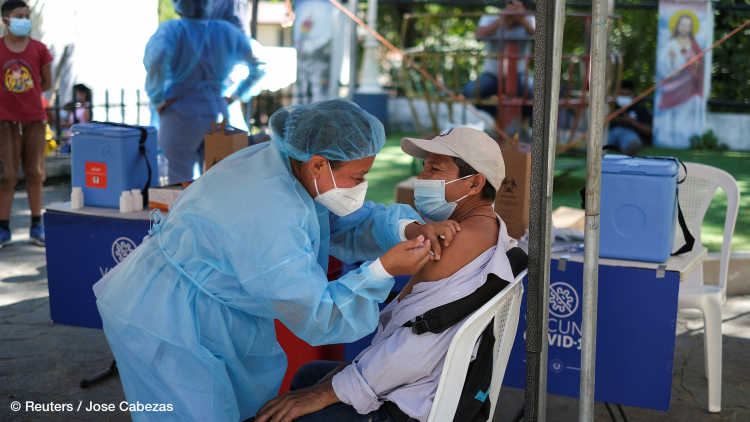- Home
- Publications
- GIGA Focus
- Executive Personalisation in the Time of COVID-19
GIGA Focus Global
Executive Personalisation in the Time of COVID-19
Number 2 | 2021 | ISSN: 1862-3581

The COVID-19 pandemic is revealing its severe implications not just for health systems worldwide. One striking political consequence has been renewed power concentration in the executive. There are signs of a global increase in this executive personalisation having occurred over the last 12 months.
Personalisation of executive political power is a process in which the chief executive’s discretionary power over political decisions increases at the expense of other political actors. Increased personalisation may undermine the provision of public goods including healthcare, increase corruption, and threaten regime stability.
Even before the pandemic, there was a trend across world regions towards the expansion of executive political power, manifesting itself in the erosion of vertical and diagonal constraints on governmental power. These trends were particularly pronounced in Latin America, and in the Middle East and North Africa.
In Brazil and Mexico, presidents have used their already extensive authority to centralise decision-making and thus imprint their views on the pandemic’s handling. In Egypt’s military-dominated electoral autocracy, President Abdel Fattah al-Sisi has fortified his personal grip on power during the course of COVID-19’s spread. In Israel, Prime Minister Benjamin Netanyahu – under indictment for bribery and fraud – has managed to stay in power and to delay conviction partly due to the pandemic.
Policy Implications
Executive personalisation has taken new twists and turns under the COVID-19 pandemic that may have detrimental political effects in the medium- to long-term, with or without major regime transformation. European and German policymakers should update their existing monitoring instruments to react to these potential political effects of the pandemic.
COVID-19 and the Personalisation of Executive Power
When the COVID-19 pandemic began to spread in February 2020, leaders around the world were forced to grapple with it so as to limit its effects. Most of them issued stay-at-home orders or imposed lockdowns, quarantines, curfews, and restrictions on movement. Public gatherings, including elections, were delayed or cancelled, limits to freedoms of assembly, association, and speech were imposed, and democratic institutions were constrained in their work. Although many of these measures conformed to expert recommendations on containing the virus, they also provided chief executives with a window of opportunity to bolster their own power.
Conceptualising the Personalisation of Executive Power
While not every chief executive made international headlines, there are signs of a global increase in executive personalisation. This is particularly the case across countries in Asia-Pacific, Latin America and the Caribbean (LAC), the Middle East and North Africa (MENA), and of sub-Saharan Africa. We define the personalisation of executive political power as a process in which the chief executive’s discretionary power over political decisions increases at the expense of that of other political actors. This definition contains three constitutive elements: (1) the chief executive; (2) the idea of an increase in discretionary power; and, (3) the question of who other relevant political actors or organisations are.
The chief executive: Whether they are called presidents, prime ministers, kings, or heads of a military council, chief executives are those holding the most important political position in a given country. Importantly, the (individual) chief executive differs from (collective) executive power, meaning the ministers, aides, and advisors, in that the latter operate under the former’s direct authority and their power may be subject to the chief executive’s discretion.
Increases in discretionary power: We understand discretionary power as the chief executive’s ability to influence political decisions without being constrained by other political actors. Often, actions of personalisation are subtle, do not appear as part of formal institutional changes, and are thus difficult to trace and label. These include the circumvention of existing decision-making structures, the appointment of loyalists to key state positions, in addition to the outright changing of institutional rules (Slater 2003).
Other political actors: These are the organisations and individuals that either formally or informally have a say in the political decision-making process. Who they are depends on the specific characteristics of the political system at hand. In democracies, these include the formal political institutions of the executive, legislative, and judicial branches, but also political organisations, parties, and lobbying groups. In autocracies, these might be the central committees of ruling parties, powerful businesspeople, or the military leadership.
It is crucial to note that such personalisation can occur in any type of political system and from any existing degree of personalised executive power: that is, it is not the same as deinstitutionalisation or autocratisation. In other words, it does not equate to a decline in the institutional requirements for electoral democracy. While personalisation undermines the checks and balances that the chief executive faces, it does not necessarily lead to threats to the electoral rules’ very existence. Similarly, not all autocracies are highly personalised, as strict forms of collective leadership provide effective constraints on the chief executive in military juntas and party regimes. Finally, the results of the process of personalisation of executive power might be long-lasting or rather short-lived, depending on the institutional and structural contexts as well as on the ability of other actors to undo changes made by personalising leaders.
Changing Constraints on Executive Power
Worries about the accumulation of political power in the hands of the executive had been voiced long before the current pandemic struck. At least since the middle of the first decade of the new century, post-Cold War optimism about the victory of liberal democracy had been supplanted by warnings of an end to the most recent wave of democratisation, the stagnation of democratic development in many recently democratised countries, and the return of authoritarianism. One typical aspect of this alleged crisis of democracy is the erosion of mechanisms that constrain the power of the executive, and thus lead to the expansion of the chief executive’s discretionary power over political decisions. Existing literature conceptualises constraints on executive power per three dimensions: vertical, horizontal, and diagonal (Lührmann, Marquardt, and Mechkova 2020).
Vertical constraints refer to the mechanisms that ensure citizens can control the executive through regular, free, and fair elections. Consequently, all attempts at manipulating elections – such as gerrymandering, changing of voting rights, and outright vote-rigging – lead to an erosion of vertical constraints on executive power.
Horizontal constraints describe the institutional checks and balances through which the other constitutional powers of government, namely the legislature and the judiciary, limit the discretionary power of the executive (O’Donnell 1994). Chief executives’ intentions in accumulating power often undermine horizontal constraints on their discretionary power. This is achieved by expanding their grip on decision-making bodies such as the legislature or the ruling parties, and by curtailing the autonomy of the judiciary.
Diagonal constraints include the checks on executive discretionary power from non-state actors, especially civil society organisations and the media. Attempts by the chief executive to reduce diagonal constraints on their power include attacks on media freedoms and bans on civil society activism.
Drawing on the most recent available data from the Varieties of Democracy (V-Dem) project (Coppedge et al. 2020), Figure 1 below shows the development of regional averages across the four world regions in the three dimensions of constraints on executive power. This is done for the period 2005 to 2019, the latter being the last year for which data is available. All three variables range between 0 and 1, with 0 indicating the lowest and 1 the highest possible level of constraints. The graphs indicate that not all dimensions were equally subject to an erosion of executive constraints and that there are considerable differences across regions – but also important dynamics and changes within the regions occurred over time too.

The right-hand graph in Figure 1 shows a coherent trend across all four regions of declining diagonal constraints. In terms of vertical and horizontal constraints, meanwhile, there are considerable regional differences. The countries in LAC started out with the strongest limitations on executive power but saw a marked decline in all three dimensions. The developments in Asia-Pacific and sub-Saharan Africa are less pronounced. Vertical and horizontal limits on executive power were, on average, strengthened across the Asia-Pacific region, while sub-Saharan Africa saw a net decline in the vertical and a slight net increase in the horizontal dimension.
The MENA saw the most drastic changes, and the graphs clearly show the impact of the political liberalisation in many of the region’s countries during the 2010/11 Arab Uprisings and the subsequent return of authoritarianism across all three dimensions. While vertical and horizontal limitations on chief executives’ power have net increased in the MENA region if we compare the pre-Arab Spring period with the situation in 2019, the downwards trend is clear. Given these regional patterns, it is worthwhile to discuss whether and how chief executives in LAC and the MENA – the regions with the highest and lowest overall degree of executive constraints as well as with the most pronounced changes, respectively – used the window of opportunity that the COVID-19 pandemic provided to further increase their discretionary power.
Executive Personalisation in LAC and MENA
By the time the current pandemic began, LAC and the MENA had already seen considerable erosions in the constraints on executive power. Moreover, anecdotal evidence suggests that the pandemic indeed constituted a convenient moment for chief executives to further personalise their power in at least some cases. Evidence from Brazil, Egypt, Israel, and Mexico shows how subtle and diverse these changes in the discretionary power of presidents and prime ministers have been.
Executive Personalisation in LAC
In Mexico, as in other LAC countries, people were angry with inadequate national responses to inequality, poverty, insecurity, corruption, poor state performance, and other governance failures. In 2018, voters had brought Andrés Manuel López Obrador (AMLO) to the presidency: a seasoned left-wing politician who staged himself as an anti-establishment figure. AMLO’s project was personalistic from the outset. He won by a landslide, promising a complete rupture with the established order – which he characterised as one of moral decline. His task was to “put the poor first,” and to rid the state of fraud and corruption. He ran under the banner of the National Regeneration Movement (MORENA), the party he had created in 2014 from other parties and unorganised popular constituencies. MORENA obtained control of the federal congress and several governorships, but remained dependent on AMLO’s charismatic leadership, thus indicating weak legislative constraints on the chief executive.
In his fight against corruption, AMLO claimed “republican austerity” and aggressively cut state budgets – which included massive lay-offs of public-health personnel and the dismantling of traditional social programmes. Discarding old institutions did not mean engaging in institution-building however, but a tight centralisation of expenditure to the presidency and the erection of parallel structures under the latter’s authority – such as the coordination of social plans and other programmes, and the appointment of presidential delegates to the federal states (Sánchez Talanquer 2020). While the state shrank and centralised, the armed forces increased their own power. They did so in an unprecedented manner and well beyond their already-extensive previous role, for instance by expanding their participation in internal-security tasks after the dissolution of the Federal Police, as well as in other political and economic matters (Pérez Correa 2020).
When the pandemic hit Mexico, the chronically deficient public-healthcare system was suffering under a severe cost-cutting scheme, the administration was being centralised, and national security was becoming increasingly militarised. The left-wing president did not change his stance much while facing the hardships of the pandemic. His reluctance to spend money surprised everyone, including the International Monetary Fund, which recommended to increase social outputs. From the start, AMLO followed a vague and incoherent laissez-faire approach to the crisis, avoiding committing to social-distancing measures. When the president caught COVID-19 in January 2021, by when Mexico had reached third place globally in absolute numbers of deaths, AMLO continued appealing to people’s faith and personal strength as remedies. While in quarantine, he stated that worse than the pandemic was “the plague of corruption.” Corresponding to his direct appeal to the people and the political needs of his party in an electoral year, he has personally promoted vaccination. Yet the government’s vaccination scheme has, as with AMLO’s other social programmes, been criticised for its unconventional and personalistic design, raising concerns of its potentially clientelist use in an electoral year – when the president should instead be rendered accountable. AMLO had only a mild version of COVID-19 as it happened, yet his temporary separation from the tasks of government still highlighted the uncertainty and fragility embedded in a strongly personalist project.
Brazil’s Jair Bolsonaro – a former army captain, long-term backbencher in the Brazilian Congress, and open defender of past dictatorships and far-right values – won the presidency in 2018. As with AMLO in Mexico, Bolsonaro promised to crush political corruption and crime. He would also renew Brazilian politics by undoing the left’s legacies inherited from the Workers’ Party presidencies. Once in power he left his own small party and refused to form a coalition to work with Congress, recruiting mainly technocrats, military officers, and radical politicians to executive positions. Sometimes referred to as “the tropical Trump,” Bolsonaro’s negationist and anti-scientific approach to the pandemic has repeatedly made international headlines. He initially faced it by deepening social polarisation and using incendiary rhetoric against democratic institutions – Congress, the judiciary, local governments – that contradicted his views (Bülow und Llanos 2020).
The Federal Supreme Tribunal threatened Bolsonaro with investigation, Congress with impeachment – which eventually pushed him to tone down his rhetoric and seek cooperation with the latter. Yet Bolsonaro did not change his views on the pandemic. Accordingly, he used appointments and other administrative measures to centralise COVID-19-related decisions and agencies, including the health ministry, under his direct authority (Inácio, Santana, and Mendes da Rocha forthcoming). At the beginning of the pandemic, Bolsonaro dismissed two health ministers for contradicting his recommendation of unproven remedies such a hydroxychloroquine and his opposition to social distancing. The health portfolio eventually went to an active army general without prior healthcare experience who aligned with the president’s views and appointed a military team that reversed previous decisions to contain the virus. Such inaction on part of the federal government severely undermined the state’s public-health capabilities, despite the engagement of subnational authorities, federal legislators, and courts to guarantee and implement health measures and social policies.
In January 2021, a death toll exceeding 212,000 people and a succession of scandals – such as the shortage of oxygen and a consequent surge of deaths in Manaus – closely pointed to the president’s and his ministers’ errors. Revived calls for impeachment prompted Bolsonaro to tighten his leverage in Congress by securing the presidencies of the two chambers, which he managed with generous handing out of pork funds and ministerial positions, in open contradiction of his anti-political electoral promises. This move may protect the president’s agenda, while reducing horizontal controls on his performance. In parallel, the recent launch of the vaccination process – being in the hands of the governor of São Paulo, a political rival of the president – may dissipate urgent concerns about the pandemic and further help the president to survive politically.
Executive Personalisation in the MENA
In Egypt, notions of personalisation would be key features of regime consolidation after the Arab Uprisings as part of a military dictatorship with Abdel Fattah al-Sisi as the president at its helm. After the abdication of President Hosni Mubarak in February 2011 due to widespread mass protest, the country was formally ruled by the Supreme Council of the Armed Forces (SCAF) until Mohamed Morsi, an Islamist leader and former member of the Muslim Brotherhood, became Egypt’s first freely elected president in June 2012. Within a year, however, Morsi was ousted by the military. Followed by another period of SCAF rule and after a period of unprecedented state repression and violence, in June 2014 the new strong man, Sisi, became the current president.
While Sisi, a former general and head of military intelligence, has relied on a personality cult and the strategic positioning of family members within the intelligence services and state bureaucracy, his rise and consolidation of power at the top of the Egyptian state signifies above all the structural ascent of the military not only within the country’s economy but increasingly also in other sectors of social and political life too (Sayigh 2019). Legislative changes implemented during the current pandemic exemplify evidence for both the further advancing of militarisation as well as for executive personalisation at the top of the system. After initial denial, Sisi reacted vigorously to the spread of the virus under a state of emergency – which predates the pandemic, being ongoing since 2017 – by closing schools and universities and providing financial means for a COVID-19 prevention strategy. Subsequently, the president delegated the daily management of the pandemic to the cabinet – which thereafter implemented a partial lockdown, combined with a campaign of silencing critics of its policies.
In May 2020, in a more enduring formal change, the Egyptian Emergency Law was amended. Officially justified as a way to improve the effectiveness of public-health management, only 5 of the 18 amendments were actually tied to health issues. The rest provided the president with new tools to expand his power, for instance by allowing him to restrict all public protest and gatherings, to control the prices of goods and services, and to broaden the jurisdiction of military courts by ordering military prosecution if any of the law’s provisions are violated (Human Rights Watch 2020). In July 2020, the Armed Forces Officers’ Service and Promotion Law was amended, stipulating that all military personnel who want to run for election at any level need SCAF approval (AFP 2020). The latter is a superordinate military institution headed by Sisi that has ruled twice within the last 10 years after the demise of Presidents Mubarak and Morsi.
Israel is the only country in the MENA with regular, fair, and free elections. Yet the country has seen an incremental enhancement of the chief executive’s power already since the 1980s (Balmas et al. 2014). This process reached its peak during the late 1990s, a period in which Israel experimented with the direct election of its prime minister (notwithstanding its unique parliamentary system). This attempt was terminated in the early years of the new century since none of the expected stabilisation could be achieved – that due to the pertinacious fragmentation of Israel’s party system. In 2001, Israel therefore returned to a system through which the prime minister, as chief executive, is elected indirectly by the country’s parliament, the Knesset.
During the COVID-19 pandemic, a specific notion of executive personalisation has emerged. Benjamin Netanyahu, the current prime minister who is under indictment for three cases of bribery and fraud, is at the centre of this following key pre-pandemic moments. First, parliamentary elections in April and September 2019 failed to deliver clear majorities in the Knesset. When attempts to form a government failed in December 2019 – partly due to parties on the left refusing to cooperate with Netanyahu, as a person under investigation for corruption – new elections were scheduled for 2 March 2020. Second, criminal investigations have been ongoing against Netanyahu since around 2017. Following his formal indictment in November 2019 by the attorney general, the prime minister was forced to relinquish the four ministerial posts he held at that time – but did not give up the premiership. Netanyahu’s reaction culminated in a tirade against the country’s judiciary, police, and media, who he accused of plotting against the will of the people. Meanwhile parliamentary elections took place as scheduled on 2 March 2020 – which again did not produce a clear majority for any party, and the first trial against Netanyahu was set for March 17.
In parallel, Israel was hit by the first wave of the COVID-19 pandemic. Netanyahu as acting prime minister issued a series of executive orders at that time which prevented the newly elected parliament from convening and also shutdown courts. “Likewise, the courts shutdown also was approved in the middle of the night by Netanyahu’s hand-picked justice minister, just a day before the prime minister’s criminal trial was to begin. The decree, citing the coronavirus, postponed the trial until May” (Heller 2020). This gave Netanyahu time to finish a power-sharing deal with his main opponent Benny Gantz – leader of the center-left “Blue and White” alliance – a few weeks later in April. With that, Netanyahu – who is the long-term leader of the right-wing Likud party – not only managed to divide the Blue and White alliance in the Knesset but also gained control over the appointment of Supreme Court judges – as well as a right to veto the appointments of the next attorney general and the head of the prosecution too.
This power-sharing deal would have been unimaginable without the pandemic, as Gantz only agreed to it to keep Israel governable during the deepening COVID-19 crisis. Moreover, the deal allowed Netanyahu to extend his premiership into a 12th consecutive year and granted him the necessary leverage to influence any final legal verdict against him. However, the Israeli version of executive personalisation during the pandemic is still ongoing, as the current coalition broke down in December 2020 and new parliamentary elections have been scheduled to take place on 23 March 2021. As a recent report by the newspaper Haaretz indicates, Netanyahu has already started manoeuvres to delay the evidentiary sessions of the court trial until after the next elections. Should he win, his supporters within the Knesset could pass a new law granting him immunity until the end of his time in office and even allowing him to influence who will become the next Israeli president – a person who eventually could pardon him if necessary (Levinson 2021).
Consequences and Policy Implications
The chief executives in the four examples given have tested the limits of power well beyond their rhetorical attacks on opposing actors and institutions during the current pandemic. Mexico’s and Brazil’s presidents have become famous for their inaction in the fight against COVID-19. However they have been actually quite active and skillful in the use of their vast executive powers to circumvent established bureaucracies and political opponents. Where they faced horizontal constitutional constraints, AMLO and Bolsonaro found ways to circumvent them to get what they wanted. The policy consequences of these manoeuvres have been severe – as health and economic indicators show – in the short run. They may be even more negative in the medium- to long term – particularly, through the active involvement of the military in political affairs.
In fact, the four examples reveal erosion in all three dimensions of executive constraints, though not all of them in each of the cases. For Egypt, the pandemic has been a catalyst for the actions of a leader of an already highly repressive and militarised authoritarian regime – one in which vertical and diagonal executive constraints were already very low – serving to further tighten the leash. Horizontal constraints were removed by the placing of emergency authority in the hands of the president. By limiting the capabilities of media and civil society activists to monitor and challenge the military’s conduct, the changes to the emergency provisions also limit the diagonal constraints on the executive. Finally, despite further expanding the military’s internal-security role, Sisi has weakened the military’s institutional ability to act as an independent horizontal or vertical constraint on his discretionary power. It is now easier for him to formally select loyalists from among the military and filter out those Egyptian generals that could be a threat at the ballot box.
In Israel, executive personalisation was neither caused by, nor did it lead to, institutional change or the formal abolition of horizontal constraints. Nonetheless, Netanyahu masterfully exploited existing institutional weaknesses and utilised the discretionary power of his office to effectively shield himself from legal prosecution. The pandemic was an asset in this as it forced other political actors such as Gantz to play along so as to ensure the government’s effectiveness in light of a national health crisis. These findings reiterate that the personalisation of executive power and the erosion of constraints are nothing new, and certainly not the result of the global coronavirus crisis; the pandemic has provided a new opportunity for executive aggrandisement, however.
In terms of future prospects, we do not expect significant change in the short- to medium term. In light of slow vaccination rates – Israel being a rare counterexample – and the emergence of more infectious variants of the virus, the exceptional situation which grants chief executives the window of opportunity for expanding their discretionary power is likely to be with us for some time. In 2021, elections are scheduled to take place in Israel and Mexico, which provides a chance for voters to hold the chief executive accountable – both in terms of personalising executive power and on their record in fighting the pandemic. However, as not only the examples of AMLO and Netanyahu show, chief executives have been able to use COVID-19-related measures – including vaccination – for electoral gain.
Executive personalisation has taken new twists and turns during the current pandemic in many countries across the globe. European and German policymakers should be aware of these ongoing changes and monitor their consequences. Moreover, executive-power concentration is not bad per se; the success cases of New Zealand, South Korea, and Taiwan show that even consolidated democracies with free societies can design and implement effective and efficient pandemic responses if the government acts decisively. Power concentration becomes problematic, rather, if it represents an end in itself, goes beyond the current necessities, and is perpetuated past the immediate crisis situation. In evaluating this potential trade-off, an in-depth understanding of the forms, causes, and consequences of the expansion of executive power is crucial, which also requires local knowledge from experts, media, and civil society in the countries suffering from such personalisation. For policymakers to design effective measures to prevent the erosion of constraints on executive power and support local actors aiming to defend existing constraints, more precise evidence must be collected. This should also be understood as a call for researchers to pay attention to the phenomenon of executive personalisation and to closely study the impact of crises such as the current pandemic as windows of opportunity for the concentration of power in the hands of the chief executive.
Footnotes
References
AFP (2020), Egypt’s Sisi Ratifies Law Hampering Soldiers from Seeking Office, in: News24, 30 July, www.news24.com/news24/africa/news/egypts-sisi-ratifies-law-hampering-soldiers-from-seeking-office-20200730 (20 January 2021).
Balmas, Meital, Gideon Rahat, Tamir Sheafer, and Shaul R. Shenhav (2014), Two Routes to Personalized Politics: Centralized and Decentralized Personalization, in: Party Politics, 20, 1, 37–51.
Bülow, Marisa von, and Mariana Llanos (2020), Brasil: Los límites y peligros de un presidente polarizador, in: Yanni Pettiná and Rafael Rojas (eds), América Latina. Del Estallido Social a la Implosión Económica y Sanitaria post COVID-19, Lima: Crítica, www.crisol.com.pe/libro-america-latina-estallido-social-implosion-economica-sanitaria-post-covid19-9786124753237 (20 January 2021).
Coppedge, Michael et al. (2020), V-Dem [Country–Year/Country–Date] Dataset V10, Gothenburg: University of Gothenburg: Varieties of Democracy Institute, www.v-dem.net/en/reference/version-9-apr-2019/ (20 January 2021).
Heller, Aron (2020), Protesters Accuse Netanyahu of Exploiting Pandemic for Power Grab, in: Associated Press, 19 March, http://bit.ly/3r87Ect (18 January 2021).
Human Rights Watch (2020), Egypt: Covid-19 Cover for New Repressive Powers, Human Rights Watch, www.hrw.org/news/2020/05/07/egypt-covid-19-cover-new-repressive-powers (2 February 2021).
Inácio, Magna, Luciana Santana, Marta Mendes da Rocha, and Aglaé Tumelero (forthcoming), La confrontación de la pandemia de COVID-19 en Brasil: Inacción presidencial y descoordinación federal, in: Iberoamericana, 76.
Levinson, Chaim (2021), Netanyahu Making Progress in Bid to Cancel His Corruption Trial, in: Haaretz, 17 January, www.haaretz.com/israel-news/.premium-netanyahu-making-progress-in-bid-to-cancel-his-corruption-trial-1.9457766 (19 January 2021).
Lührmann, Anna, Kyle L. Marquardt, and Valeriya Mechkova (2020), Constraining Governments: New Indices of Vertical, Horizontal, and Diagonal Accountability, in: American Political Science Review, 114, 3, 811–820.
O’Donnell, Guillermo A. (1994), Delegative Democracy, in: Journal of Democracy, 5, 1, 55–69.
Pérez Correa, Catalina (2020), AMLO’s Broken Campaign Promise: Demilitarizing Mexico, in: Americas Quarterly, 9 December, www.americasquarterly.org/article/amlos-broken-campaign-promise-demilitarizing-mexico/ (25 January 2021).
Sánchez Talanquer, Mariano (2020), Mexico 2019: Personalistic Politics and Neoliberalism from the Left, in: Revista de ciencia política (Santiago), 40, 2, 401–430.
Sayigh, Yezid (2019), Owners of the Republic: An Anatomy of Egypt’s Military Economy, Beirut: Carnegie Middle East Center, https://carnegie-mec.org/2019/11/18/owners-of-republic-anatomy-of-egypt-s-military-economy-pub-80325 (20 January 2021).
Slater, Dan (2003), Iron Cage in an Iron Fist: Authoritarian Institutions and the Personalization of Power in Malaysia, in: Comparative Politics, 36, 1, 81–101.
General Editor GIGA Focus
Editor GIGA Focus Global
Editorial Department GIGA Focus Global
Research Programmes
How to cite this article
Kuehn, David, Mariana Llanos, and Thomas Richter (2021), Executive Personalisation in the Time of COVID-19, GIGA Focus Global, 2, Hamburg: German Institute for Global and Area Studies (GIGA), https://nbn-resolving.org/urn:nbn:de:0168-ssoar-71705-3
Imprint
The GIGA Focus is an Open Access publication and can be read on the Internet and downloaded free of charge at www.giga-hamburg.de/en/publications/giga-focus. According to the conditions of the Creative-Commons license Attribution-No Derivative Works 3.0, this publication may be freely duplicated, circulated, and made accessible to the public. The particular conditions include the correct indication of the initial publication as GIGA Focus and no changes in or abbreviation of texts.
The German Institute for Global and Area Studies (GIGA) – Leibniz-Institut für Globale und Regionale Studien in Hamburg publishes the Focus series on Africa, Asia, Latin America, the Middle East and global issues. The GIGA Focus is edited and published by the GIGA. The views and opinions expressed are solely those of the authors and do not necessarily reflect those of the institute. Authors alone are responsible for the content of their articles. GIGA and the authors cannot be held liable for any errors and omissions, or for any consequences arising from the use of the information provided.











